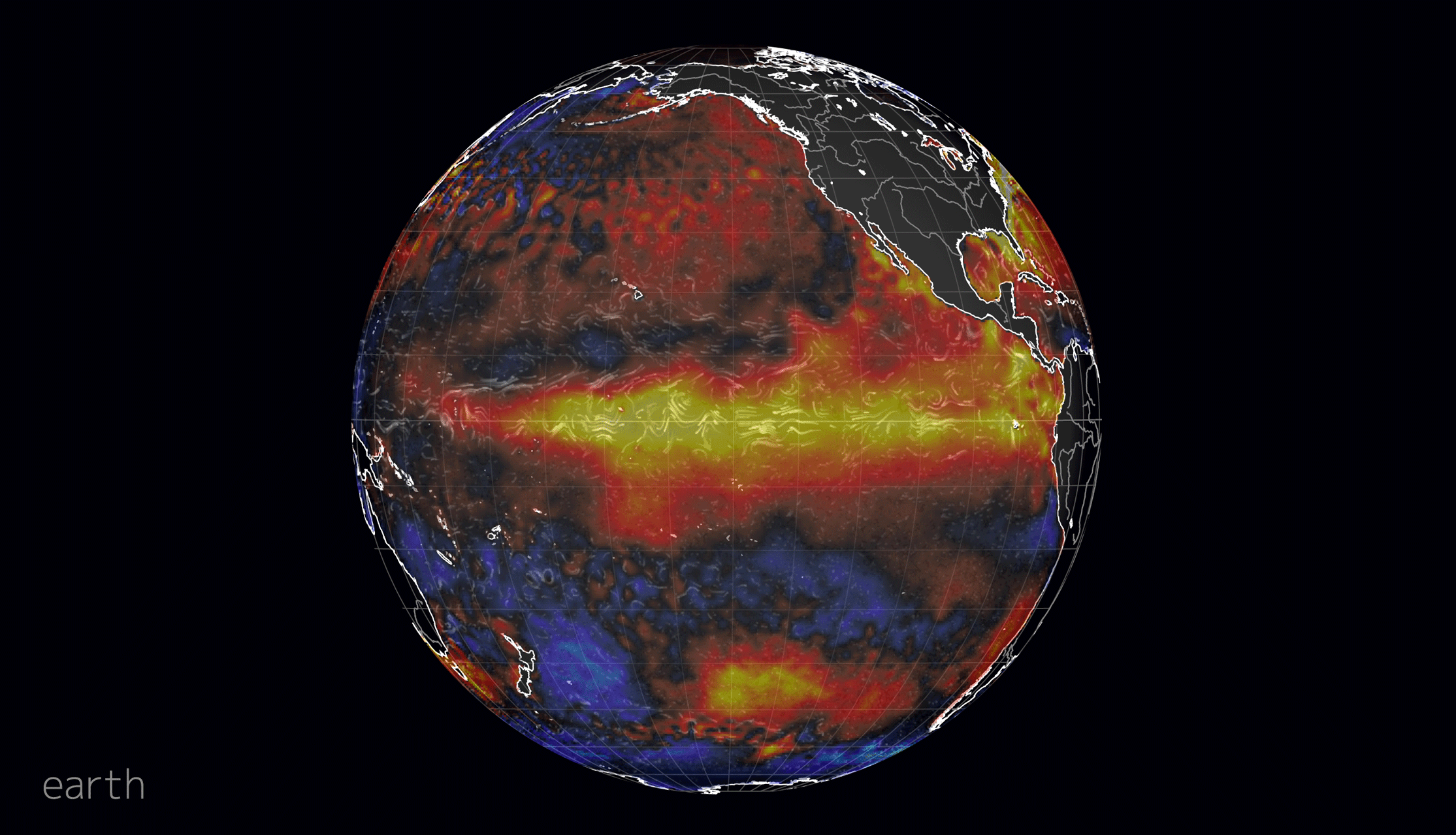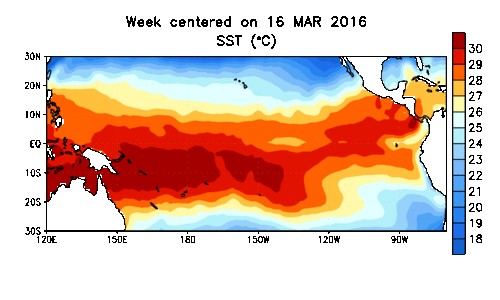Forecasters lean toward the emergence of a weak to 'borderline moderate' La Niña in the fall

In January, above average sea surface temperatures projected like a spear along the equator in the eastern and central Pacific Ocean — a hallmark of El Niño. Since then, the warmth has given way to cooler than normal temperatures. (Images: earth.nullschool.net. Animation: Tom Yulsman) If you live in Texas — or Indonesia, for that matter — it might be difficult to believe, but El Niño truly has gone away. Record-setting rainfall has recently caused devastating floods in Texas. Meanwhile, drought continues in parts of Southeast Asia. And both have been linked to lingering impacts of El Niño on atmospheric circulation patterns. But as the animation above illustrates, January's warm spear of sea surface waters in the equatorial Pacific — a hallmark of El Niño — has now given way to cooler than average temperatures. This heralds the official end of El Niño, according to the latest monthly update from the Climate Prediction Center of the National Weather Service.
SEE ALSO: As El Niño fades, here comes La Niña
Here's another animation showing the transition, this time over the course of the month of May:

Evolution of sea surface temperatures in the tropical Pacific. (Source: Climate Prediction Center) And here's the official word on what's happening from the Climate Prediction Center's update today:
Overall, ENSO-neutral conditions are present and La Niña is favored to develop during the Northern Hemisphere summer 2016, with about a 75% chance of La Niña during the fall and winter 2016-17 (click CPC/IRI consensus forecast for the chance of each outcome for each 3-month period).
In the United States, La Niña is typically associated with warm and dry conditions across the southern tier of states. Meanwhile, Southeast Asia tends to experience wetter than average conditions. But the now-gone El Niño did not live up to typical expectations in some regions, including Southern California. So we'll just have to wait and see how things develop.













